
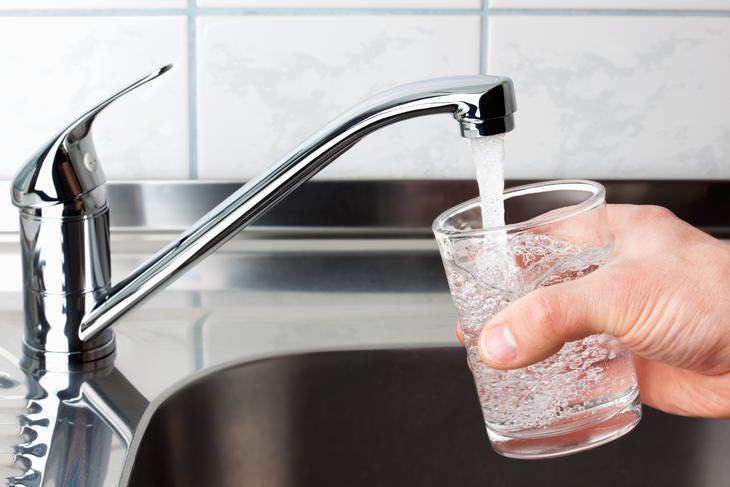
1. What could the water be contaminated with?
Bacteria or chemicals, such as nitrates can contaminate the water. When a water test shows the presence of bacteria, it is considered to be unsafe to drink. Total coliform organisms, a group of bacteria found in the environment, are an indicator of the safety of your water. If present, it indicates that disease-causing organisms, including bacteria, viruses, and parasites, could potentially be present in your water supply.
In addition, if any amount of E.coli bacteria is found in a water sample (E. coli generally lives in the intestines of warm-blooded animals and humans) it is known that human sewage or animal feces have contaminated the water supply. The presence of nitrates in well water is usually the result of farming activities like fertilizing. Consequently, if nitrates are at levels above 10 milligrams per liter of water, an infant may suffer from a condition known as 'blue baby syndrome' - caused by nitrates interfering with the blood's ability to carry oxygen throughout the body.
2. What are the signs of drinking contaminated water?
When drinking contaminated water, the health effects people experience may or may not present themselves immediately. In addition, the overall health, age and physical condition of the persona are other factors which determine the extent of what is experienced. Some of the more common problems experienced from drinking impure water include, but are not limited to:
• Gastrointestinal Problems
• Diarrhea
• Nausea
• Intestinal or Stomach Cramping
• Intestinal or Stomach Aches and Pains
• Dehydration
• Death
However, if no signs or symptoms are experienced, it does not mean that there are no potential long-term effects. In fact, if water sources have been contaminated with radium or radon gas, it is likely that you will not notice immediate health effects. However, long-term exposure has been linked to others. In addition to this, other possible contaminants found in tainted water sources include:
• E. coli Bacteria
• Coliform Bacteria
• Nitrates
• Lead
• Fluoride
• Arsenic
• Radium
• Radon
• Pharmaceuticals
• Herbicides
• Pesticides
• Chemicals
• Fecal Matter
• Microbial Pathogens
• Parasites
• Viruses
• Petrochemicals
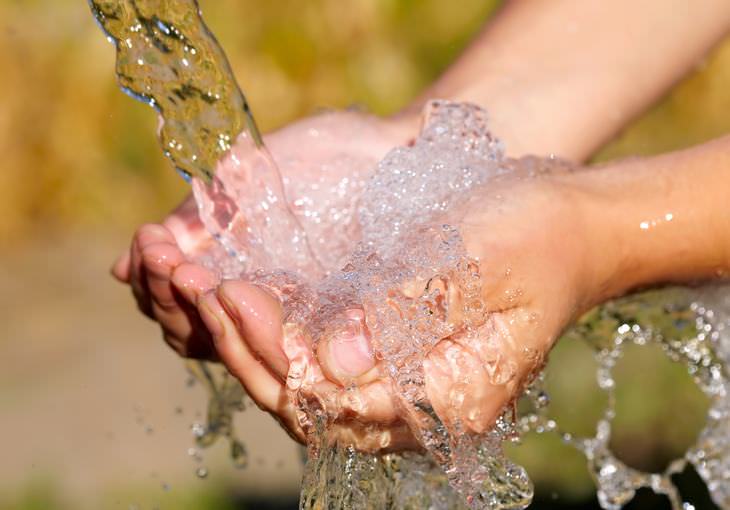
What causes water to become contaminated?
Contaminants can enter water supplies through various means, including being absorbed into the ground and contaminated ground water sources, broken pipes, and excess water run-off during heavy rain periods.
Does dirty/contaminated water smell?
There are instances where the water could smell or taste different. But in most cases, contaminants have no taste or odor, leaving no indication of contamination.
Will boiling the water help make it safe?
When boiling the water, it does kill most types of parasites, bacteria, and viruses. However, it can cause increased concentrations of other contaminants due to evaporation of water.
How can I tell if my water is safe to drink?
The best way to test if your water is safe and free from bacteria is to get it tested by an experienced water purification company in your area. The results will let you know exactly what is in your water and what steps you can take to improve it - such as getting quality water softeners and filters installed in your home or business.

Just How Much Water Should You Drink Every Day?
Simply drinking eight glasses of water a day may not be enough. Find out the key factors that determine our water needs.

Take a Daily Nap and Reap These Healthy Benefits...
Had a rough night? Here are 16 reasons to take a nap.

Check Your Health in 1 Minute with This Easy Tip!
Whether you fear going to the doctor, or fear you have a serious health issue, this easy, little trick will help you notice if you have a serious health issue.
 10:18
10:18
This Doctor Tried the Keto Diet and This is What He Thinks
Curious to try the KETO Diet? Listen to what a doctor has to say first.

Detoxify Your Body by Keeping Your Lymphatic System Healthy
Your body is designed to heal and find balance, and one of the ways it clears waste and maintains healthy circulation is through the lymphatic system. Stay healthy by decongesting your lymphatic system using these six methods.
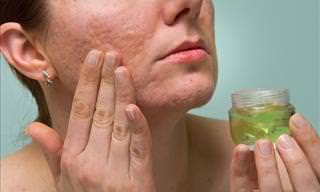
What Causes Large Pores, And What Can You Do About It?
Do you have large pores? This guide will tell you what you need to do to diminish them.

Collection: 12 Full Guides to Pet Care!
What can't we feed them? How do we know they're sick? What does their behavior mean? All this and more you'll find in these guides.

8 Best Ways to Handle Those Who Constantly Pull You Down
Here are some tips on how to get around people who constantly put you down.

20 Incredibly Helpful Things You Can Do With Vinegar
Here are some great tips on how to use vinegar around the house. Try out some of these solutions and vinegar will never just be a salad dressing again!

How to Keep Greens Crisp and Fresh for More Than a Week
Here are 3 straightforward methods for keeping your greens fresh for longer than a week...

7 Cleaning Mistakes Most of Us Still Make
All of these 7 cleaning mistakes are extremely common, and what’s worse, all of them can completely ruin your hard work while cleaning

Can't Stop Overthinking? This Insightful Guide Is For You
Do you overthink? This guide will help you manage your thoughts better.
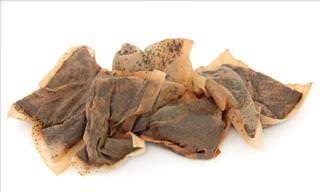
7 Fantastic Ways to Use Tea Bags in Your Garden
Before you dump your tea bags you should be aware that they can come in handy in the garden. Here are 7 great ways you can use tea bags in your garden.

DIY: 6 Methods for Removing Scratches from Eyeglasses
If you wear glasses or know someone who does, you've probably heard them complain about scratches. Now you can fix these scratches with the following 6 tips!

Book Recommendations: 10 of the Best Reads for Dog Lovers
If your best friend is a dog, then you’ll this list of the best book about dogs.
 1:30
1:30
The Trick to a Perfect Flower Arrangement is Amazingly Easy
Sometimes, the simplest ideas yield the best results - A simple trick that makes flower arrangement as easy as pie!

These Sleep Secrets Are Only Known to a Few...
What are the things that will help make your sleep better?

Keep Your Jewelry Sparkling Clean With This Perfect Guide
Jewelry is quick to tarnish and lose its beauty. But don't despair - use these cheap and easy methods to clean it at home!

12 Foods You Must Add to Your Diet in Your 40s and Later
In this article, we’ll focus on 12 foods with proven anti-aging effects that are easy to find in stores and even easier to add into your diet

11 DIY Lamp Shades That’ll Brighten Up Every Home!
Lighting makes all the difference in a house's atmosphere but is usually super expensive. now you can make your own lampshades at a fraction of the cost!

This Weird Hack Will Keep Your Cookies Fresh for Days
Keep your cookies fresh for days with this unbelievable, weird hack.

The DO'S and DON'TS of Gardening During the Heat
As the temperatures soar, make sure you don’t commit these to your garden.

10 Natural Ways to Get Rid of Mice In Your House!
There are ways to deal with a mice infestation in your home in an efficient and humane way.

This Town Was Built Especially for People with Dementia
This small Dutch village is designed for and entirely populated by residents with dementia and Alzheimers.

Shocking! How Thieves Steal Card Details at the ATM
Take note of some of the most common ways thieves will try to steal your credit card details.

Shocking Bathroom Items That SHOULDN'T Be in the Bathroom
Bathrooms get so damp and humid, they are a breeding ground for bacteria. And here are 8 surprising things we need to keep out of the bathroom.

10 Features to Look For When Buying a New Washing Machine
If you’re buying a new washing machine, you should keep these tips in mind first.

WD-40 Has So Many Uses I Can Hardly Believe It!
If you think WD-40 has only one use, you'll be utterly delighted by this list of 11 other uses.

Waking Up at Odd Hours? Here's What Your Body is Saying
This guide will help you understand how your body systems work and identify any mental challenges you may face.
 8:24
8:24
Eye-Relaxing Tips: Simple and Fast Exercises for Your Eyes
Do your eyes feel strained at the end of the day? These useful exercises will provide some relief.

8 Ways to Remove Sweat Stains from Clothes
To help you out, this article will cover what sweat is, how to prevent stains, and how to remove any existing ones.
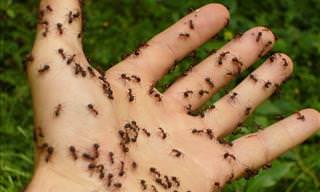
5 Common Insect Bites You Should Fear and Beware!
Sometimes bug bites can be relatively harmless, and sometimes they can be much more worrying. But how do you know when? Here are 5 bug bites to watch for.

Experts Warn Against Ordering These Foods at Restaurants
According to the experts, you should avoid ordering the following 8 foods at restaurants. You'll want to heed their advice.

Do You Store Your Eggs in the Door of Your Fridge? Don't!
If you store your eggs in the refrigerator door, you should stop. Here's why.
 3:44
3:44
Got an Egg Slicer? Here's What You Can Use It For
Creative ways on what to do with your egg slicer. Impressive!

Increase Your Home's Value with These Genius Tricks
Thinking of selling your home? Here's how to increase it's value.

Reaching age 112: People Share Their Long Living Secrets
10 of the oldest people on earth would like to share their secret...
 4:56
4:56
I Never Knew Scarves Could Be Tied in This Many Ways!
25 creative ways to tie a scarf in less than 5 minutes

These Healthy Vegetables Are Very Easy to Grow In a Pot
If you grow your own vegetables at home, you can both eat healthier and save money. These 10 vegetables don't even need a garden to grow perfectly well.

Step by Step – Learn 36 Interesting Facts About Walking!
What are the benefits of speed walking and how long would it take to walk around the planet? Learn this and much more now!

Cutting These Things In Half Did Wonders For My Wallet...
Cutting the amount of certain things you use in half is an excellent exercise in frugality. Furthermore, you'll save money. Here are 10 things to cut in half.

These 15 Surprising Cucumber Uses Will Come in Handy
Cucumbers are a very healthy addition to any diet, but they also have many other great uses that you should know about. Here's 15...

Say Goodbye to Neck and Back Pain with These Super Tips
These top tips from chiropractors will enable you to put back and neck pain firmly in the rearview mirror.

Guide: How to Get Rid of 18 Bad Odors in the House
Familiarize yourself with the 18 items that can help eliminate, neutralize, prevent, and mask any unpleasant smells in every area of your home.
 2:00
2:00
If You See a Baby Choking, Do You Know What To Do?
If you see a baby choking, do you know what to do? This guide explains.
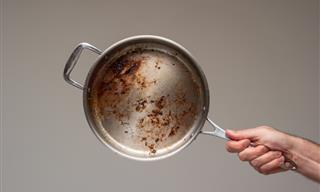
How to Remove Burnt-on Food Residue From Pots and Pans
Before you reach for steel wool, try these effective and mild methods of removing persistent food residue from pots and pans.


